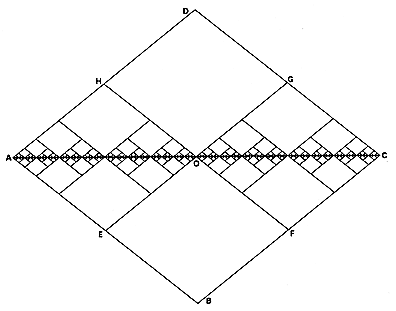Buddhism consists of a vast number of lineages branching outward like an enormous fractal. It is a dynamic, constantly changing landscape of teachers, students and philosophies that have grown and changed over time. Every new student and teacher adds their experience and understanding to the path. Numerous cultures have contributed to the color and form of the practices. This is the strength and merit of Sangha. This is the evolving nature of Dharma.
Buddhism is not a static dogma written in stone at some ancient point in time by a single teacher and then passed on in memorized, route fashion from teacher to student down the ages. Students are not taught to blindly follow a predetermined map to travel from our land of confusion to the Pure Land. We travel together towards of goal of mutual fulfillment and benefit.
As I stated previously, everyone has their own dream that they must awake from. Our dream is our personal mythology filled with our own metaphors, signs and symbols. We can utilize the metaphors, signs and symbols from other person's mythologies and from shared religious mythologies, but ultimately, we must awaken ourselves. This is the nature of Buddha within.
The very profound point of the teaching Progressive Stages of Meditation on Emptiness as instructed by the Venerable Khenpo Tsultrim Gyamtso Rinpoche is that the Buddhist understanding of Emptiness has progressed through several stages over time. Buddhist thought regarding Emptiness was not the same at the time of the historic Buddha Shakyamuni as it is today. In addition, today there exist numerous Buddhist schools with differing views all over the world. All these different schools and lineages offer a huge diversity of approaches. None of these schools are static, they are all in a constant state of change. This is the precision of the deliberately non-straight line.
We do not have the option of blindly following predetermined paths mapped by any particular lineage. The idea of an external path is an illusion. Path is only a word, a metaphor, for something that happens inside us. How can there be an external path leading to a Pure Land located in some distant realm, if we accept the statement by the Buddha that samsara and nirvana are one?
 |
| From Synergetics Fig. 522.09 |
Geshe Kelsang Gyatso says about the Fourth Noble Truth, the Truth of the Path:
In this context, 'path' does not mean an external path that leads from one place to another, but an inner path, a spiritual path that leads to the pure happiness of liberation and enlightenment
Can you see the possibility of the Pure Realm existing here, in this very moment?
No comments:
Post a Comment